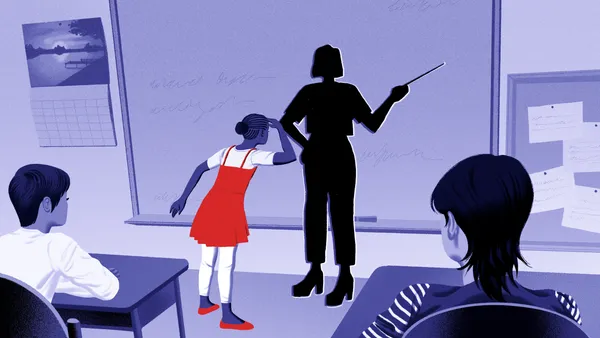Job dissatisfaction among pre-K-12 teachers has spiked from 45% to 79% since the start of the COVID-19 pandemic, according to polling conducted in June by Hart Research Associates on behalf of the American Federation of Teachers.
Workload, compensation, work conditions, disruptions and support were all identified as factors impacting educators’ negative sentiments. Close to half of AFT members reported concerns about the prospect of a mass shooting in the wake of tragedies like the Uvalde, Texas, elementary school massacre in May, 40% of members say they may leave their jobs in the next two years, and around 75% of teachers say they wouldn’t recommend the profession.
“Whether it was mask wars, culture wars, the war on truth, or the devastation in Uvalde, members sacrificed and struggled and carried their schools and their students through the most difficult days of their lives,” AFT President Randi Weingarten said in a statement. “Students returned to campuses and classrooms with enormous needs, and educators shouldered countless additional responsibilities as they rallied to meet those needs.”
Furthermore, around 90% of respondents said education has become too politicized. Recent Gallup polling found 43% of Democrats say they have “a great deal” or “quite a lot” of confidence in public schools, compared to only 14% of Republicans. That’s down from 48% and 34%, respectively, in the early months of the COVID-19 pandemic in 2020.
The comprehensive national survey of 2,379 AFT members included 1,341 pre-K-12 educators. The teacher union also includes members in the higher education, healthcare and public employee sectors.
The intense political polarization of education has come amid a backdrop of controversies over the idea that critical race theory is taught in K-12, how schools handle LGBTQ issues in policy and curricula, COVID-19 precautions and more. These issues have resulted in heated school board debates, threats against administrators and teachers, and the passage of measures such as Florida’s “Don’t Say Gay” law.
These challenges have exacerbated a teacher shortage that predated the COVID-19 pandemic nationwide.
Data from the National Center for Education Statistics in March showed 44% of public schools were affected by full- or part-time teacher vacancies. Of schools with one or more vacancies, 57% said they increasingly had to fall back on assigning teachers to work outside their job descriptions.
The highest teaching vacancies were reported in special education (45%), general elementary teaching positions (31%) and substitute teachers (20%). Additionally, 51% of schools cited resignations rather than retirement as the leading cause for vacancies.
If the AFT survey is any indication, these factors are also likely to play a greater role in districts’ negotiations with unions going forward: Three-quarters of respondents said they see the national teacher union as critical in fighting for their rights.







 Dive Awards
Dive Awards






